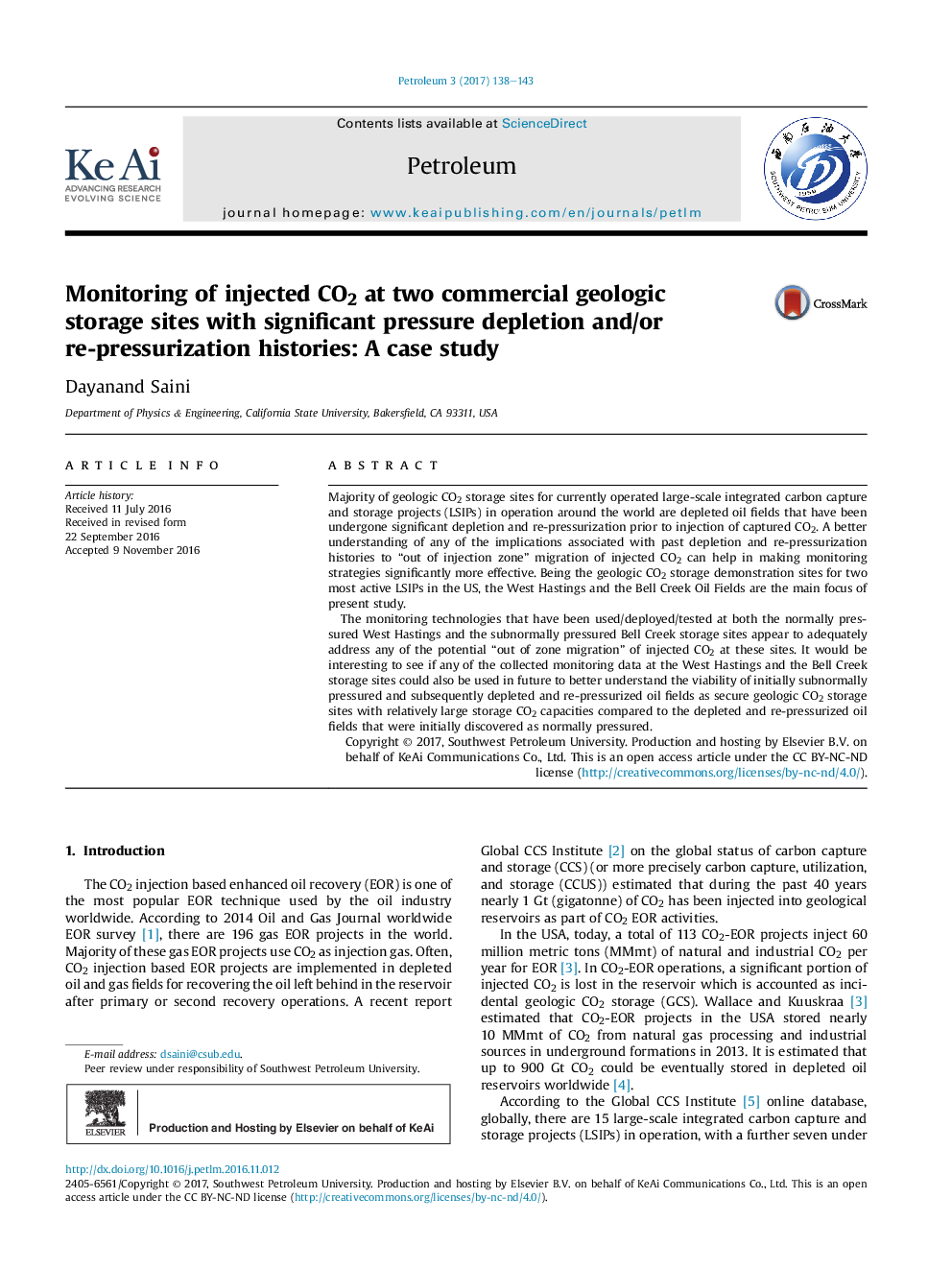| Article ID | Journal | Published Year | Pages | File Type |
|---|---|---|---|---|
| 5026516 | Petroleum | 2017 | 6 Pages |
Majority of geologic CO2 storage sites for currently operated large-scale integrated carbon capture and storage projects (LSIPs) in operation around the world are depleted oil fields that have been undergone significant depletion and re-pressurization prior to injection of captured CO2. A better understanding of any of the implications associated with past depletion and re-pressurization histories to “out of injection zone” migration of injected CO2 can help in making monitoring strategies significantly more effective. Being the geologic CO2 storage demonstration sites for two most active LSIPs in the US, the West Hastings and the Bell Creek Oil Fields are the main focus of present study.The monitoring technologies that have been used/deployed/tested at both the normally pressured West Hastings and the subnormally pressured Bell Creek storage sites appear to adequately address any of the potential “out of zone migration” of injected CO2 at these sites. It would be interesting to see if any of the collected monitoring data at the West Hastings and the Bell Creek storage sites could also be used in future to better understand the viability of initially subnormally pressured and subsequently depleted and re-pressurized oil fields as secure geologic CO2 storage sites with relatively large storage CO2 capacities compared to the depleted and re-pressurized oil fields that were initially discovered as normally pressured.
